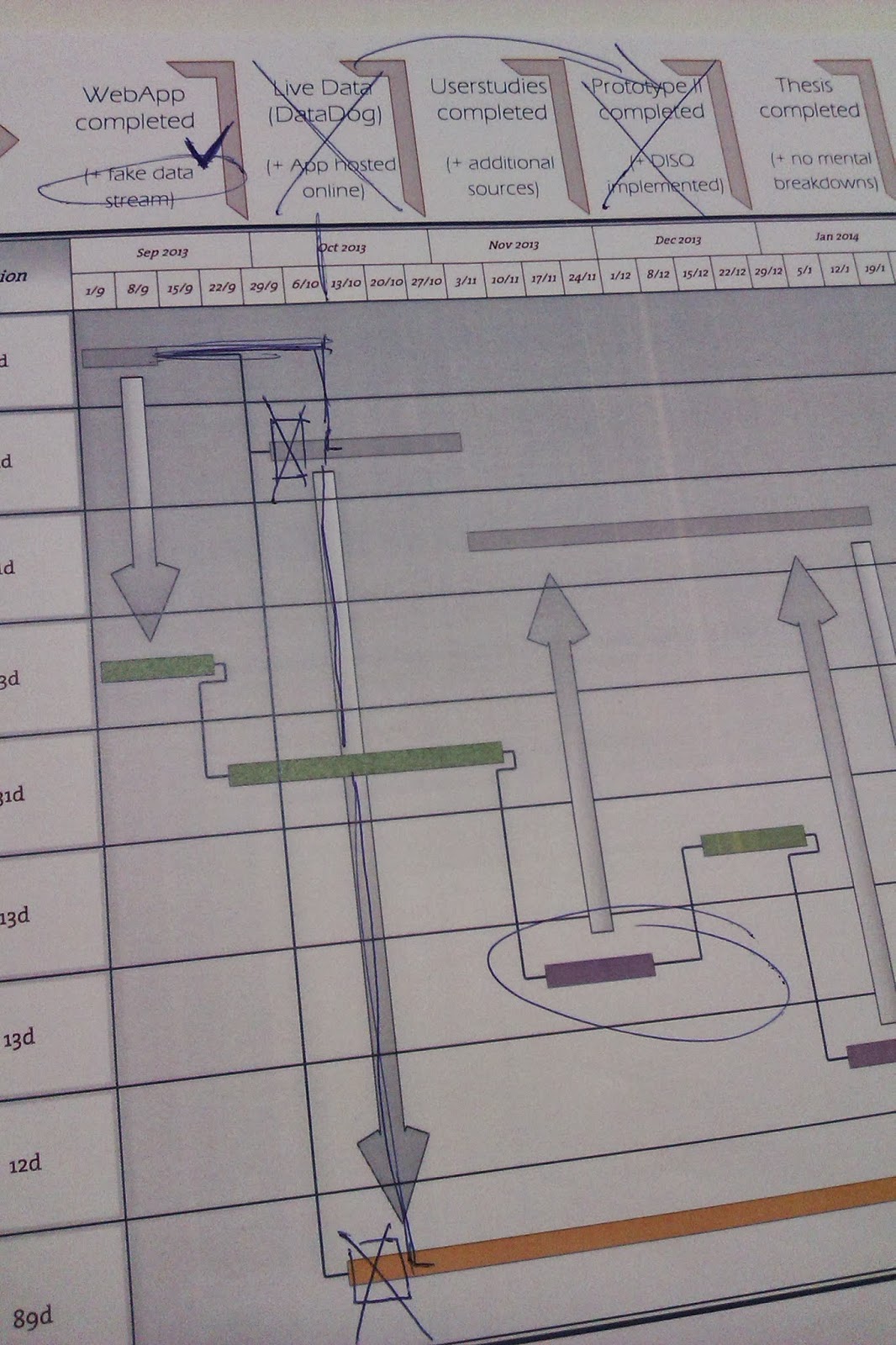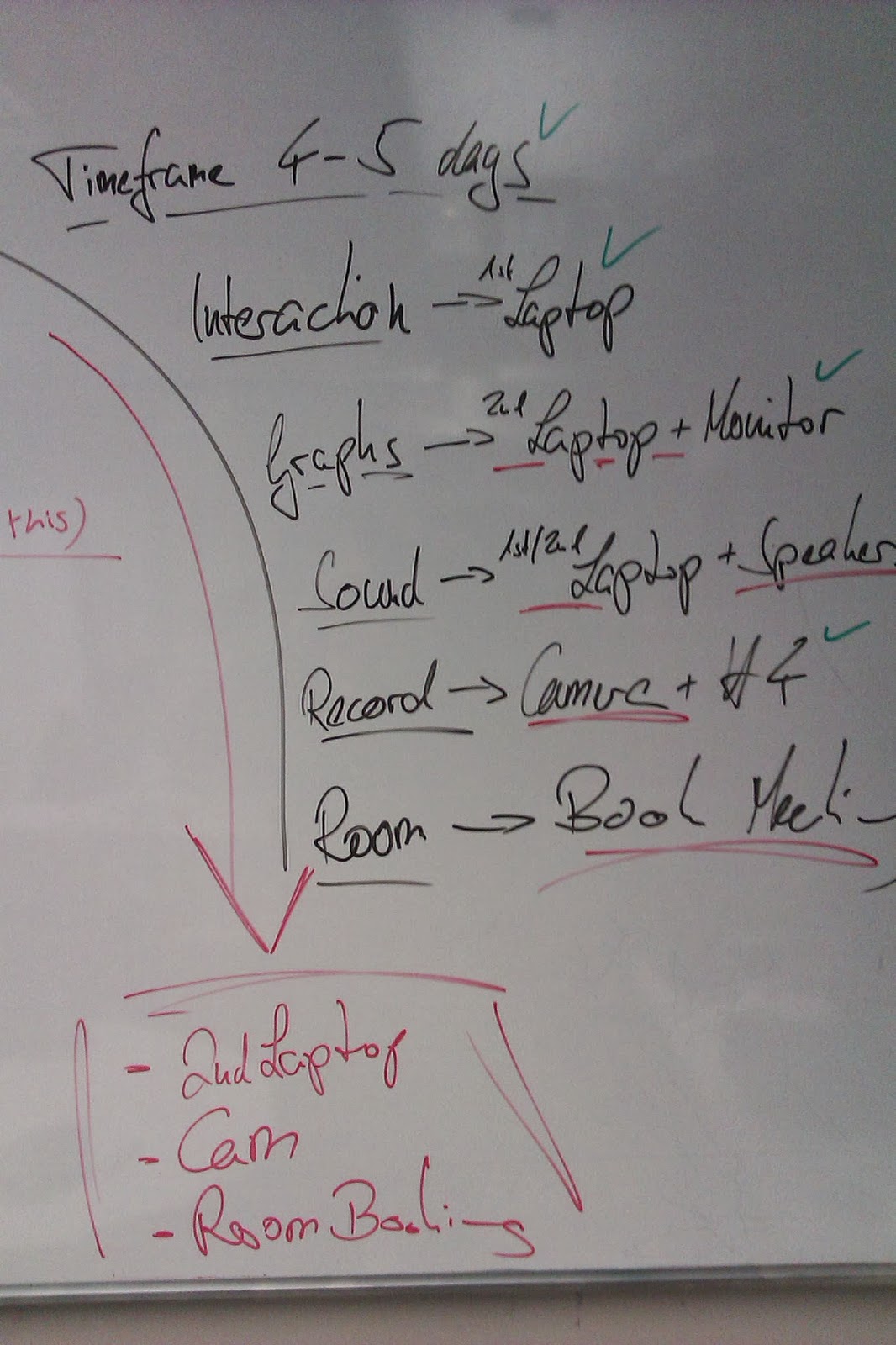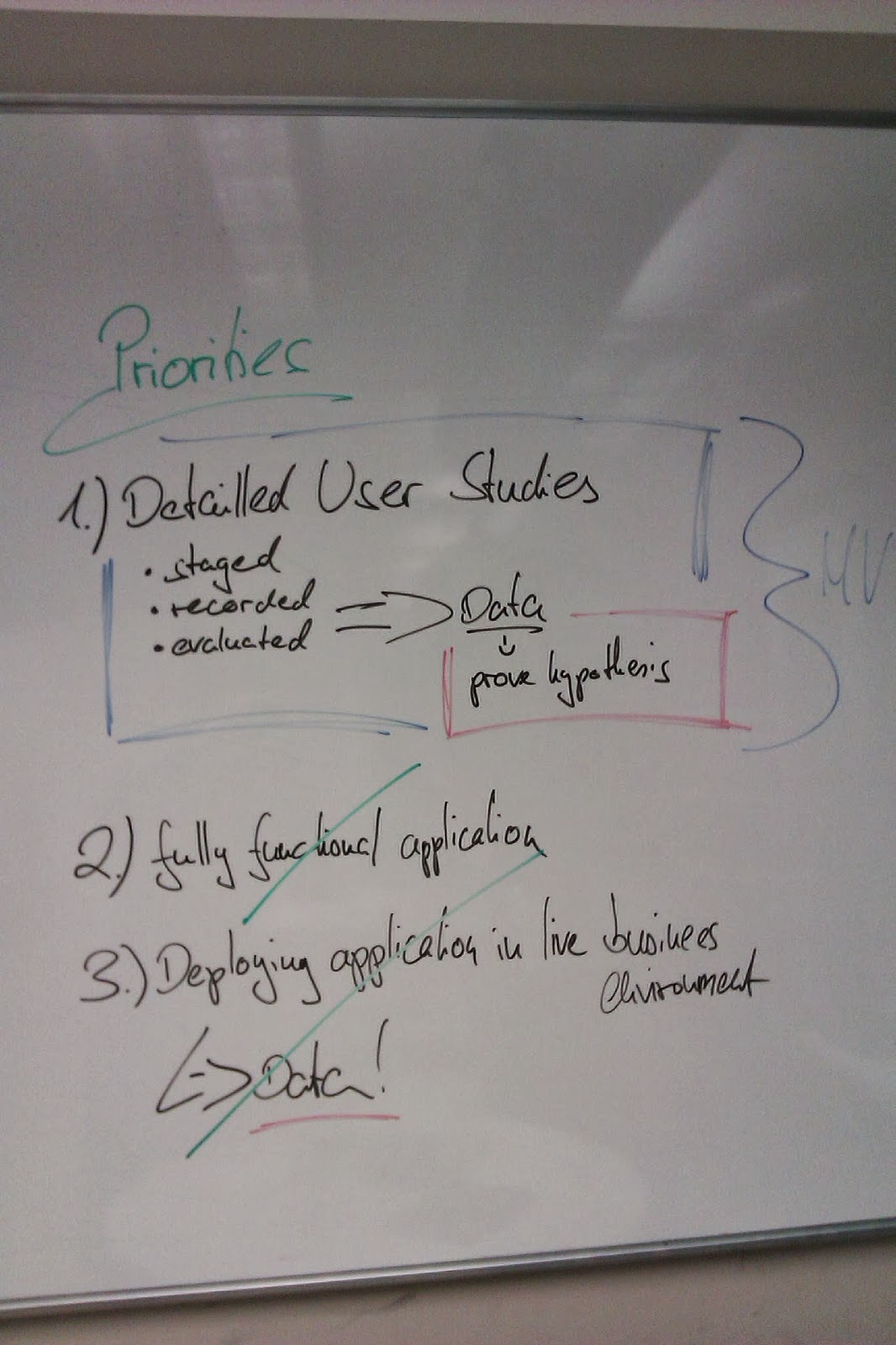Further research has been conducted in the area of ambient information system. The major insights for this project are presented below, referring to the specific papers that have been examined closer so far.
Most works define Ambient Displays by referring to already existing work in this area. They mostly stress the aspect of visual ascetics and minimal data representations. It is also often mentioned, that the information of an ambient display should be non-critical, as for this type of data should be represented in a more detailed manner. This statement is standing a bit in contrast with the intended work of this project. Hence, it will be discussed and challenged.
The paper "
Towards a Taxonomy for Ambient Information System" by Martin Tomitsch, Karin Kappel, Andreas Lehner and Thomas Grechenig from the Vienna University of Technology introduces the term "Ambient Information System", intending to broaden the horizon of ambient displays, as there are not only visual approaches to ambient technology and ambient information. The term "Display" however does not necessarily describe a visual display, but could also refer to others means of information representation, such as audible feedback for information as in an "Auditory Display". Still, broadening the area of Auditory Display from visually focused projects is very important and eye-opening,
Furthermore, the paper compares different taxonomies for the term "Auditory Displays" and concludes with their own taxonomy for auditory information systems:
"abstraction level, transition, notification level, temporal gradient, representation, modality, source, privacy and dynamic of input"
Additionally, various dimensions are identified, such as "Abstraction" or "Notification Level" (among others). The amount of abstraction mainly results how much the represented data has been aggregated and minimized. The notification level is the amount of times "
a system alerts the user or even forces him to interrupt his primary task". (Adjusting and using this notification level in a smart way can possibly challenge the non-critical data aspect of Ambient Devices).
Here's a list of all dimensions being identified by the authors:
- abstraction level
- transition
- notification level
- temporal
- gradient
- representation
- modality
- source
- privacy
- dynamic of input
The paper "
Intrusive and Non-intrusive Evaluation of Ambient Displays" by Xiaobin Shen, Peter Eades, Seokhee Hong and Andrew Vande Moere from the University of Sydney and the University of Melbourne focuses on evaluation techniques for Ambient Displays:
"Intrusive Evaluation — is where the user’s normal behavior is consciously disrupted by the evaluation experiment. This kind of evaluation often consists of usability tests in a laboratory environment for a short period. Most such experiments are conducted using well established evaluation techniques in information visualization (for example, questionnaires and interviews)."
"Non-Intrusive Evaluation — is where the user’s normal behavior is not consciously disrupted by the evaluation experiment. This often focuses on actual use in a general environment (in situ) over a long period. Currently, few existing evaluation techniques can be applied successfully in this manner."
Furthermore, a practical user study is presented in high detail, providing very useful information. Two major conclusions are being stated at the end of the paper:
- "Users need better support information from ambient displays"
- "Non-intrusive evaluation cannot be tested until the display integrates into the environment."
Some of the papers mention the work "Designing calm technology" by
Mark Weiser and John Seely Brown from 1995. This paper appears to be an important body of work dealing with the idea of ambient technology and will be investigated during further research. This paper can be found
here.
The paper "
Ambient Display using Musical Effects" by Luke Barrington, Michael J. Lyons, Dominique Diegmann and Shinji Abe from the University of California and the ATR Intelligent Robotics and Communication Labs in Japan mentions a particular practical work named "Audio Aura" which shows similarities with the planned ambient auditory display for DataShaka. This work will be investigated further. Their research paper can be found
here.
Both works will be further investigated.
References
Barrington, L., Lyons, M., Diegmann, D. and Abe, S. n.p. Ambient Display using Musical Effects. [e-book] Electrical & Computer Engineering, University of California, San Diego & ATR Intelligent Robotics and Communication Labs, Kyoto, Japan. [Accessed: 2 Oct 2013].
Shen, X., Eades, P., Hong, S. and Vande Moere, A. 2007. "Intrusive and Non-intrusive Evaluation of Ambient Displays", paper presented at Pervasive '07 Workshop, Toronto, Ontario, Canada, 13 May. Toronto, Ontario, Canada: Pervasive '07 Workshop: W9 - Ambient Information Systems.
Tomitsch,, M., Kappel,, K., Lehner, A. and Grechenig, T. 2007. "Towards a Taxonomy for Ambient Information Systems", paper presented at Pervasive '07 Workshop, Toronto, Ontario, Canada, 13 May. Canada: Pervasive '07 Workshop: W9 - Ambient Information Systems.





